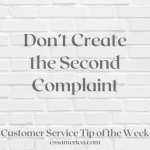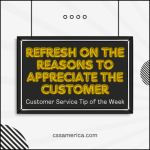When working with a government agency recently, we were planning to customize customer service training content for them. During the course of the training development interviews we conducted, it became clear that customer service training had never been done before at the agency. Customer service skills were not addressed in the organization’s hiring processes. Customer service was not part of the organization’s reward system, and customer service only briefly appeared on the staff performance evaluations.
Yet, management sincerely stated that customer service was important. It was important that customers were treated with respect, that the residents felt they were important, that upset customers got their issues addressed professionally, and that staff could appropriately address each customer based on that unique customer’s characteristics and needs.
So why was there the disconnect between management wanting to have great customer service and their doing what needed to be done to get great customer service?
Assuming the sincerity of the management team, the answer had to lie in the organization’s leaders not really knowing HOW to get great customer service. In the past, most businesses assumed that employees were generally nice, respectful, caring, and communicative people. Customer service is just common sense, and everybody knows how to deliver customer service, right? Those particularly assumptions were wrong then, and they’re REALLY wrong now.
For organizations to go from wanting great customer service to delivering great customer service, they need to understand strategically how to do so. It’s about the culture, the hiring, the training, the rewards, the accountability, the processes, the organization’s goals, the management team’s support and modeling of great customer service behaviors, and much more.
If you ever feel a disconnect between what your management says they want in customer service and what the organization actually delivers, have them take a step back, and start with a strategy.
Interested in improving your company’s customer service? See more information at: http://www.cssamerica.com/
Check out our new customer service book at http://www.amigreatat.com/





















